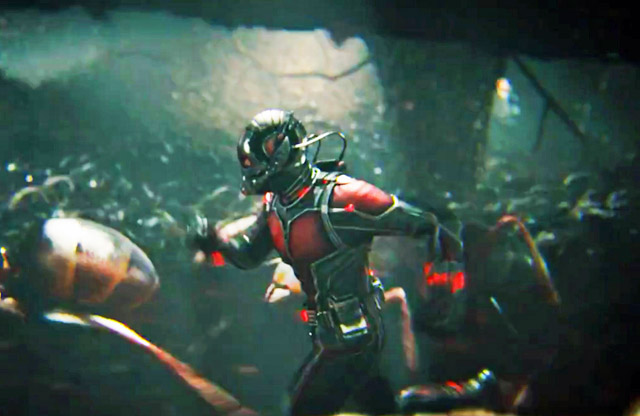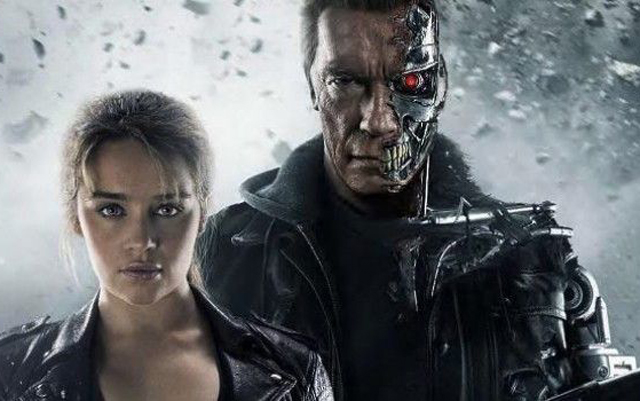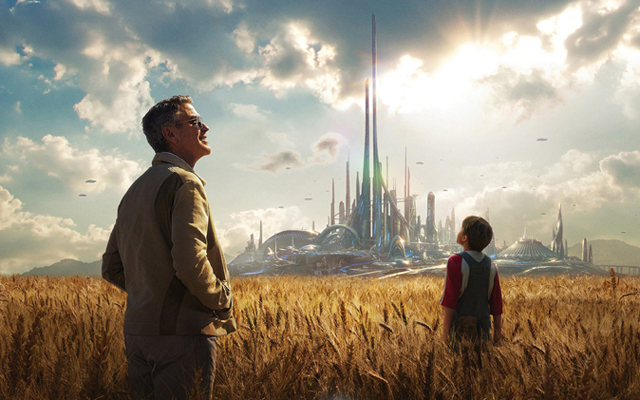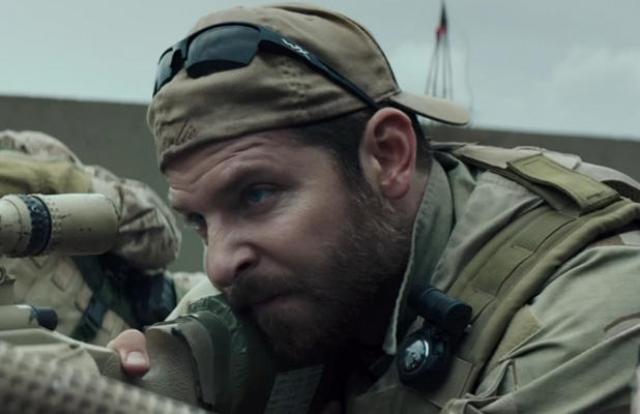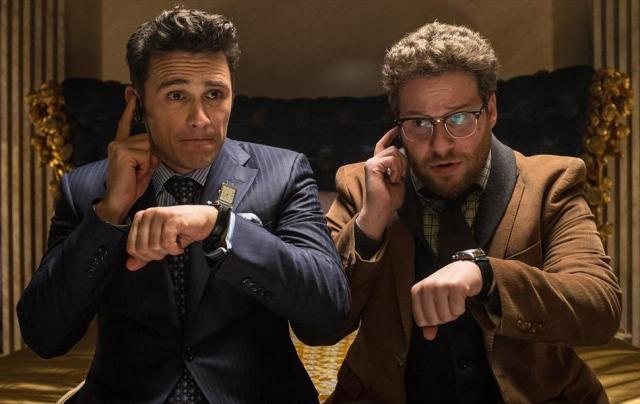Where did it all go wrong for the Fantastic Four? Without a doubt, one of the marquee titles in the Marvel Comics catalog, the dynamic quartet of Mr. Fantastic, Invisible Girl, the Human Torch and The Thing have struggled greatly to transition to the big screen, with very little success. Roger Corman produced a low budget version of the comic series in 1994, and it was deemed so bad that it never was given an official release. In 2005, Fox and Marvel jointly produced a big budget adaptation that while a mild success at the box office nevertheless received an indifferent response from audiences. A sequel to that film in 2007 re-teamed the same crew and cast (which included future “Captain America” Chris Evans) but ended up loosing more of it’s audience with another sub-par effort and tepid box office. Keep in mind, these films were made at a time before Marvel formed it’s own studio and had more control over it’s own characters. Sadly, the lackluster efforts by these previous iterations of the Fantastic Four have done a big disservice to the characters; so much so that there is virtually no audience interest left in them anymore, and the continuation of the series is purely just so big studios like Fox can keep the rights away from Marvel; hence the existence of this recent reboot. The Fantastic Four have unfortunately become the abused and forgotten foster child of the comic book world, kept in the loop purely for exploitation and shut away from it’s rightful home of Marvel Studios where it would be cared and nurtured for in the right way. With a reboot, many hoped that new life could come back to this struggling franchise, but unfortunately for the Fantastic Four, they are still a long way from home.
The new Fantastic Four arrives with a new cast headed by Miles Teller (Whiplash) as Reed Richards/ Mr. Fantastic, Kate Mara (House of Cards) as Sue Storm/ Invisible Girl, Michael B. Jordan (Fruitvale Station) as Johnny Storm/ The Human Torch and Jamie Bell (Billy Elliot) as Ben Grimm/ The Thing; a new vision guided by director Josh Trank (Chronicle); and an entirely different tone than we’ve seen from it before. And overall, these are all promising ingredients that could have made this Fantastic Four really shine and live up to the title’s potential. Sadly, the end result is not at all, shall I say, fantastic. It’s really the exact opposite. Rarely do I see so many talented people make something as bad as this movie. Of course, it’s following in the footsteps of some already really bad films, but this reboot is really where the franchise has hit rock bottom. And never have I seen such an ambitious outing get released dead on arrival either. Even the director of the film is already disowning it; taking to Twitter this week to trash the movie (albeit he later deleted his tweet and apologized). I tried to keep an open mind while I watched the movie, but almost from the opening moments I could tell that something was not right about this movie and that all the bad buzz was confirmed. There is plenty wrong here, from the out-of-place somber tone, to the terrible and lazy CGI, to the pathetic writing, and to the, sad to say, lackluster direction (you can complain all you want Mr. Trank, but you were part of the problem too). But the overall lingering problem with the Fantastic Four that this movie clearly underlines is that the characters are just being used and not embraced by their filmmakers, and that it’s clearly time for them to go home. Otherwise, we get a studio driven face-plant such as this mess.
What should never be a problem with superhero movies is the set-up, and yet Fantastic Four takes an excruciatingly long time to set up it’s story and characters and set into motion all the events that will make them who they are. The story follows Reed Richards as he develops the key to inter-dimensional travel through his scientific experimentation alongside his childhood friend, Ben Grimm. He is soon brought into contact with Dr. Franklin Storm (Reg E. Cathey) who offers to bring Richard’s experiments to their full potential in his high tech laboratory within the Baxter Building in New York City. There he meets Dr. Storm’s equally brilliant children Sue and Johnny, along with the nihilistic and rebellious young physicist Victor von Doom (Toby Kebbell). They successfully finish the project, but instead of handing off the glory of the first test run over to corporate interests, Reed and his team decide to secretly make the journey themselves. Once the portal opens for them, they arrive on the mysterious Planet Zero which contains an unknown power source in the form of a green liquid. The liquid quickly shows that it has a mind of it’s own and starts attacking the explorers, consuming Doom as it’s first victim. As the team tries to return to their home world, they are exposed to the energy source and are physically mutated in the process. Reed develops the ability to stretch his body beyond it’s natural limits; Sue gains the ability to turn herself invisible and create force fields; Johnny can command and shroud his body in fire; and Ben transforms into a super strong being made of pure rock. Jealousy and contempt for their situation keeps the team from becoming a cohesive unit at first, made even more complicated when Government interests start to interfere, but their allegiances are put to the test once Victor von Doom returns, with dangerous powers of his own.
The worst part of trying to get a reboot to work is that the film must retread old ground in order to establish itself anew and wipe away the old version of the story we already know. Remarkably, the movie does a poor job of doing both. Not only does it fail at establishing this new version of the characters, adding nothing new or getting things entirely wrong, but it also takes way too long to get itself going. That summary of the plot that I just gave you is 75% of the movie; that’s how long it took for the film to set itself up. The same plot elements that took up the majority of this film’s run-time made up only the first act of the 2005 version. In that film, the Fantastic Four had their powers by the 30-minute mark of that movie, which allowed for the rest of the flick to focus on things like team building and character development, albeit not all of that time was used well. Here, it’s all set-up, which would have been fine if there was some depth to it and a little more intrigue. But no. We are asked to accept a lot of this movie at face value with no real insight into these characters’ feelings or their motivations. I was especially baffled at how little development there was in showing how the characters deal with their new found powers. The movie actually cuts ahead a year in time showing the heroes already having mastered their powers. I’m sorry, but that’s a big problem when you just gloss over a big part of these characters’ development like that. As flawed as the 2005 version was, at least it devoted time to showing how the Fantastic Four adapted to their new powers; especially when it came to the frustration shown by Ben Grimm (played in that version by actor Michael Chiklis) as he was unable to blend in to the rest of society like the others given his appearance. You take away that growth of character and what you end up with is a very shallow and empty movie.
These story issues really stem from a poor screenwriting effort by writer/producer Simon Kinberg and director Josh Trank. Revisions to the origins of the characters and their story arc are fine if done in an interesting way; but here almost no effort was put in to making it at all distinctive. The whole project comes off as being made by committee, with everything dictated by a checklist of what multiple people believe should be necessary in a Fantastic Four movie. This leads to a lot of the familiar elements of the comic series being shoehorned in; sometimes in horribly inappropriate ways. For example, you learn that the origins of The Thing’s famous catchphrase, “It’s Clobbering Time,” came out of what Ben Grimm’s older brother would used to say to him whenever he beat him up as a child. Kinda takes the fun out of that phrase, doesn’t it? There’s plenty of other grown-inducing references thrown around throughout the movie and instead of appealing to some of the audiences’ nostalgia for the comics, it instead infuriates die hard fans who are watching their beloved characters turn into something they’re not. But, it’s not like the Fantastic Four has ever been free of bad screenwriting before; it’s just that up to now the series was seen as dumb rather than insulting. And a large reason why this script does worse by the characters is because it injects the wrong sort of tone to the story. This movie is unfortunately part of the tale-end of a recent trend in Hollywood reboots where filmmakers mistakenly believe that making something gritty automatically makes it good. What worked for Batman in Christopher Nolan’s Dark Knight trilogy doesn’t necessarily work for stuff like The Amazing Spiderman, or Teenage Mutant Ninja Turtles, and especially not Fantastic Four. And this is where part of the blame falls on Josh Trank, because even though he believes studio tampering ruined his project, he’s still the one responsible for setting the movie’s aesthetic and tone in the first place.
The movie’s tone and gritty visual aesthetic just feel’s so out of place in a series that should be lighthearted and filled with visual wonder. It leads me to wonder if Josh Trank was the right choice to lead this reboot in the first place. His debut film Chronicle (2012) was a great visual experiment, putting a superhero story within the confines of the found footage sub-genre and making it work. But Chronicle’s harrowing story-line lent itself well to a grittier tone and style. In Fantastic Four, the bleakness is just a wrong fit. When it came to the comics, the focus of the Fantastic Four series was always about family and the wonders of science. In this film, you get arguments between the heroes and a villain who likes to make peoples’ heads explode; and this is what the movie considers drama. Trank may have a point about too many outside influences spoiling what could have been a cohesive narrative, but his style also contributed to the ruin of this movie. The movie is bleak, devoid of color, and features a lot of lackluster digital enhancement. The 2005 version might have been dumb, but at least it was colorful and tried to keep the tone light, which made it more tolerable to look at. I never thought it was possible to make a Fantastic Four movie look ugly, but this movie managed to do it. Even the way that Josh Trank composes the shots feels wrong. There’s no visual flair here like we’ve seen from better super hero movies from the Marvel Cinematic Universe, or even in the recent X-Men movies. Even Zack Snyder’s much maligned Man of Steel (2013) had a visual aesthetic that couldn’t be easily dismissed as amateur. With Fantastic Four, we get what is probably the most unappealing and flat visual presentation of a super hero movie that we’ve had in many many years, and maybe probably ever.
Perhaps the biggest casualty of all is the characters themselves. The sad thing is that all of them are played by actors that I know can do better and have proven it in years past. Here, every single one of them is wasted with underdeveloped characterizations and painfully on-the-nose dialogue. Much of the focus is put on the relationship between Reed and Ben, and the actors playing them have some semblance of chemistry, but the movie’s direction and script gives them nothing to chew on in their performances, leading to a lot of unintentionally awkward interactions. Ben Grimm is especially mismanaged in this movie, becoming more brooding and pessimistic here compared with other versions. In the past, The Thing was often the team’s moral center and heart, and the one who often lightened up the mood with his positive outlook on life despite his appearance. This version of the Thing does none of that, and is completely out of character with his moody personality. The added complication of having the character visualized purely through CGI animation also adds another layer of disconnect between the character and the audience, which I don’t particularly blame actor Jamie Bell for, since he doesn’t have a say over how the character will look in the final film. The remaining cast is also wasted throughout. Kate Mara is given almost nothing to work with and is mostly forgotten; sadly because she’s the girl character in a film that mostly caters to a male audience. And Michael B. Jordan’s Johnny Storm is portrayed as such a volatile hot head that the movie comes dangerously close to making his character a racial stereotype. The only character that’s slightly improved upon from past versions is the villainous Doom; albeit in his final form. Past versions of this character have been so lame, especially the version played by actor Julian McMahon in the 2005 version. This version of Dr. Doom is at least intimidating. Unfortunately, even here they get the character mostly wrong, especially in his world-destroying master plan. Doom in the comics doesn’t want to destroy the world; he wants to conquer it. There’s a difference. Not only that, but his presence in the movie is so minimal (eight minutes of screen-time in a very rushed climax) that even here his potential is wasted.
Overall, this is not just a failed reboot of a series that still has a lot of potential, but it also squashes any credibility that the Fantastic Four may still have left as a viable franchise. It more than anything proves that Fox should no longer be the rights holders for these characters and that they should be in their rightful place alongside the other Marvel characters at their home studio. Sadly, Fox may continue to press on with more Fantastic Four movies in the future, purely as a way to keep the rights from reverting back to Marvel; that is unless this movie flops so badly that Fox will have no choice but to give it up. I rarely want to root for a movie to fail, considering that some good people have played a part in it’s making, but this is one of those cases where I am actively hoping for a flop. The Fantastic Four characters deserve a lot better and Marvel should be the ones who can help bring them back to their rightful place in the pantheon of heroes. Josh Trank may have been a little rash and lacking in self-awareness when he accused Fox of ruining his film, but he’s not entirely without reason to be upset. Fox has tried way too hard to build the Fantastic Four franchise into their own baby, and it’s backfiring on them. They wanted it to be a franchise rebirth, but instead we’ve got another possible franchise killer like Joel Schumacher’s Batman and Robin (1997) or Marc Webb’s The Amazing Spider-man 2 (2014); movies so bad that it forced their franchise characters into a long hibernation. And probably the greatest sin of all is the wasted potential. A promising director with a capable cast and a franchise in desperate need of a fresh new look should have made this Fantastic Four a home run. Instead, it’s turned into a miserable failure. The only good thing that may come out of it is that the characters may be closer now to returning home than ever before. It’s your move now Fox. In the end, Fantastic Four doesn’t live up to it’s potential nor it’s namesake, unless you can consider it a double F. And in my mind, I think even a four would be too generous for this failure of a movie.
Rating: 3/10

